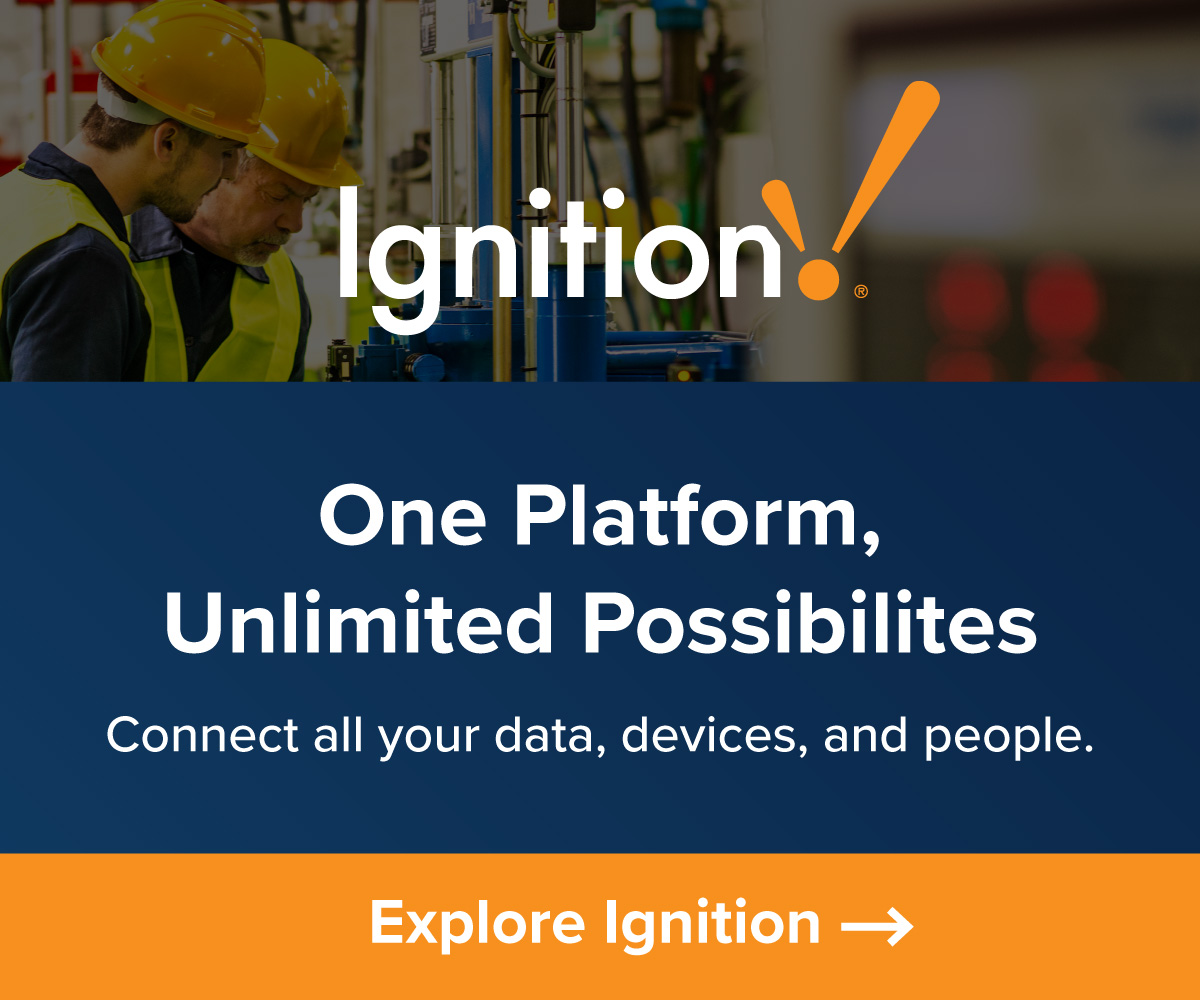by Gary Mintchell | Jul 9, 2024 | Manufacturing IT, News, Operations Management, Security, Software
Cycles of marketing thought intrigue me. Suddenly PR people are flooding my email inbox with offers to interview CTOs of security companies who wish to comment on how cybersecurity breaches are a major cause of downtime. I chose this one to post for now partly because it’s a new company. I’m also intrigued by how the IT guy from Uber thinks he can disrupt industrial automation.
Oh, and yes, this is yet another survey done by a developer company. It’s the new way to generate media coverage when you don’t have a new product to release. And, yes, I’m an enabler.
In brief:
- Copia Automation Finds $4.2M Per Hour Lost in Manufacturing from Cybersecurity Breaches and Coding Errors
- Survey of 200 U.S. executives on the emergence of Industrial DevOps reveals half of all downtime is caused by programming mistakes
Another point. Copia is taking the IT idea of DevOps (see previous blog post) into industrial settings much as HighByte did with DataOps.
Copia Automation, empowering companies to gain end-to-end visibility and control of their operational technology, released its first annual State of Industrial DevOps Report today, the first survey of its kind on the application of information technology (IT) DevOps principles and practices to the industrial sector. The report reveals that industrial coding errors cause manufacturing shutdowns lasting 30 hours on average, costing $4.2M per hour and $126M per shutdown. Half of all downtime is caused by industrial code changes, code confusion, lack of visibility into industrial code, and issues with programmable logic controllers (PLCs).
The survey highlights significant vulnerabilities in operational technology (OT) — the software and hardware that control industrial equipment. A possible cause for these is ad hoc fixes in industrial programming, with 79% of respondents saying they are commonplace.
“The cost of downtime minimizes or eliminates the margin between profitability and failure for manufacturers,” said Copia Co-founder and CEO Adam Gluck. “With coding errors and cybersecurity breaches shown as significant causes for downtime, manufacturers need to take every technological measure to protect their bottom line and ensure continuous operations with enhanced productivity. Industrial DevOps delivers the technology and the process-change to do this.”
by Gary Mintchell | Jul 8, 2024 | Operations Management, Software
I just posted about collaboration within an organization. Many companies now send news about supplier collaboration and relations. Supply chain has never been my focus in writing. My early career involved procurement and supplier relationships. This is more than a passing interest. Aras invited me to their customer conference this spring. I’ve been impressed with many of its initiatives and technology.
Aras, a leader in product lifecycle management (PLM) and digital thread solutions, announced availability of its new Supplier Management Solutions for Aras Innovator. This suite of applications streamlines collaboration, assessment, and connectivity with suppliers and OEMs by providing secure, remote access to controlled subsets of digital thread and PLM information through configurable mobile-optimized web applications.
Product oriented organizations rely on suppliers and business partners as extensions of their operations. In recent years, the supply chain has experienced increasing pressure from strict compliance regulations, new sustainability initiatives, and an increased focus on transparency. For example, the Digital Product Passport initiative in the European Union strives to promote sustainability and sourcing transparency by mandating tracking and reporting guidelines for a range of industries starting in 2026. Many organizations struggle to meet these demands due to outdated systems, limited visibility into partner information, and inconsistent communication with supply chain partners.
Aras’ Supplier Management Solutions empower organizations to collaborate more effectively with suppliers and OEMs via a unified secured environment, allowing all users access to a single set of processes and data that is up to date. By facilitating communication, data sharing, and connectivity across the full lifecycle of product development, organizations can achieve better visibility, data analytics, and efficiency. They can also reduce inventory and overhead costs, while improving quality control.
Key Features and Benefits
- Controlled Access: Provides secure, remote access to relevant PLM information for suppliers and OEMs. This reduces program delays and ensures timely enhanced communication and trust between all users.
- Streamlined Communication: Facilitates bi-directional communication and threaded discussions between organizations and suppliers, resulting in quicker, better and transparent decision making. Inform suppliers of risks, changes to shipping addresses or company policies by sending Buyer Notices
- Configurable Applications: Customized mobile-optimized web applications to meet specific business needs and support processes, improving flexibility, productivity and performance.
- Document Sharing: Allows sharing of relevant supplier documents such as CAD files and product specifications to all stakeholders trusting in one source of truth. This results in improved pricing, timing and quality from suppliers.
- Platform Security and Compliance: Ensures a secure, traceable bi-directional exchange of information between supply chain partners. With automated processes for supplier quality and risk management, organizations can effectively address compliance issues and regulatory risks, maintaining consistent quality standards across the supply chain.
- Measure Supplier Performance: Monitor supplier performance with supplier scorecards allowing Buyers to compare and make more informed sourcing decisions. Issue suppliers corrective action requests (SCARs) and track progress through collaborative workflows.
by Gary Mintchell | Jul 5, 2024 | Operations Management, Software, Workforce
Industrial collaboration tools flourish as manufacturers discover better tools and better people leadership. Further finally a press release promoting a product that includes generative AI without that as the headline! This looks interesting. Anyone out there using it? I’m curious about how it actually works.
Comprehensive collaboration workspace powered by dataops and a generative AI copilot that unify knowledge across assets, processes, and people
SymphonyAI, a leader in predictive and generative enterprise AI SaaS, announced IRIS Workspace, a no-code application for industrial knowledge workers to engage in a live, collaboration environment with all relevant information for rapid problem-solving.
IRIS Workspace empowers cross-functional teams to simultaneously engage with time-series, P&IDs (piping and instrument diagrams), documents, drawings, and images in a shared workspace for real-time problem solving using unified and contextualized data from IRIS Foundry, an AI powered, composable industrial dataops platform. Industrial users can collaborate within or across teams in a live environment, including adding notes and comments, notifying users, and drawing freehand or using the built-in annotation toolbar. Additionally, IRIS Workspace provides governance capabilities including version tracking and data and user audit. IRIS Workspace seamlessly integrates with the IRIS Copilot, introducing powerful generative and predictive AI into the collaboration workspace to provide search, summarization, insights, pattern recognition, and recommendations.
Commenting on the launch, Sukant Acharya, Executive Vice President & Global Business Head – Sustainability, IoT and Industry NeXT, HCLTech, said, “We congratulate SymphonyAI on the launch of IRIS Workspace.” He further adds, “HCLTech and Symphony AI are committed to advancing transformation of the manufacturing and industrial sector powered by Gen AI. By combining HCLTech’s Industry NeXT solution and capability suite and SymphonyAI’s IRIS Foundry platform, the collaboration will empower enterprises with real-time data collaboration and accelerated innovation.”
“With IRIS Foundry, we took bold strides to profoundly and meaningfully simplify our customers’ operational transformation with predictive and generative AI at scale,” said Prateek Kathpal, president of SymphonyAI’s industrial division. “IRIS Workspace delivers the power of a unified data platform to users’ fingertips for real-time, interactive collaboration that significantly increases productive teamwork, supports informed decision-making through data visualization, and captures breakthrough outcomes to rapidly remediate or even prevent future problems.”
by Gary Mintchell | Jun 28, 2024 | Manufacturing IT, Operations Management, Software
Long-time acquaintance Travis Cox, Inductive Automation Chief Technology Evangelist, writes in Efficient Plant magazine (check it out—I had a very small part in that a long time ago and run by some friends) that SCADA is Changing the Game.
An engineer at a Phoenix Contact event approached me about 20 years ago. “You!” he exclaimed. “It’s all your fault. The boss reads your articles about remote monitoring and access to the control system. He now thinks that even when I’m on vacation at the beach, he should be able to reach me and have me fix a problem.”
We have come a long way since then.
The pandemic and government-mandated shutdowns had a significant impact on industrial organizations. If the pandemic has taught us anything, it’s the importance of staying connected to our industrial processes not only within the factory but remotely. It accelerated the demand for data and, for most organizations, was the catalyst for digital transformation.
My conversation was a couple of years before I met Steve Hechtman, founder of Inductive Automation. A few years later:
The biggest question many organizations faced was whether their SCADA system was ready for transformation. The most obvious requirement was the ability to remotely see and control their process so operators and managers could stay connected from home. For some, this meant setting up VPNs, VNC servers, remote desktops, providing company laptops, purchasing additional SCADA client licenses, and installing modern SCADA systems.
I believe open standards foster innovation and better solutions for the user.
To meet the needs of today’s world, SCADA needs to be based on open standards, integrated with OT and IT, inherently secure, and deployed through modern practices. The days of siloed or closed systems are behind us, as they don’t work for today’s connected world.
Cox delineates the required capabilities of SCADA systems broken into five key areas.
- Distributed architectures and edge technologies
- Data modeling and UNS
- Visualization and dashboards
- Security
- Leveraging the cloud.
His article details these five areas.
I am not going to copy the entire article. Check it out at Efficient Plant.
Cox concludes:
SCADA is not just SCADA anymore. The pandemic has forced a new way of thinking. Data is vital, and the true power of today’s SCADA is the ability to get access to data, move that data to the people who needs it, and be a conduit for getting insight into that data through analytics, dashboards, and machine learning. That’s why organizations everywhere are taking small steps to realize the benefits of these technologies today.
by Gary Mintchell | Jun 20, 2024 | Automation, Manufacturing IT, Process Control, Software
I did not attend Honeywell User Group in Madrid this month. Searching for news from the event, I found a couple of press releases—one regarding Batch Processing, one regarding battery manufacturing, and also news that there will be an Americas HUG in Dallas October 1-3.
Brief information for the new products follows.
Batch Historian
Honeywell Batch Historian comprises a software digitalization solution designed to provide manufacturers with contextualized data history for reporting and analytics, leading to more efficient and cost-effective operations.
Manufacturers often encounter complications analyzing data with a lack of batch visualization, which makes it difficult to expand data usage to advanced applications. With Honeywell Batch Historian, manufacturers can now directly capture data with context from batch engines without complex configuration. The new solution leverages simple drag-and-drop tile configuration, eliminating the need for advanced programming skillsets or detailed historian database knowledge to develop reports.
The software is a standalone application that can be delivered as a module on the Manufacturing Excellence Platform (MXP), or made available as a standard part of every Experion Batch system.
Battery Manufacturing
Honeywell Battery Manufacturing Excellence Platform (Battery MXP) comprises an artificial intelligence (AI)-powered software solution designed to optimize the operation of gigafactories from day one by improving battery cell yields and expediting facility startups for manufacturers.
Battery MXP incorporates AI techniques in the manufacturing process, which enables the detection and remediation of quality issues before they result in scrapped material. The solution then utilizes machine learning to identify conditions that lead to quality issues and turns this data into action-oriented insights that manufacturers can use to improve efficiency and productivity.
by Gary Mintchell | Jun 19, 2024 | Marketing, Operations Management, Software
I can still remember the meeting to discuss technology, although I’m hazy on the exact date now but sometime in 2003. We had a new magazine. This was when ISA still had relatively large trade shows. My publisher called me. Seems there was a guy in our booth looking for the editor. He had some kind of revolutionary new software built on Java and was IT friendly.
OK, many CEOs had talked to me even in my brief career as an editor with something revolutionary. They are mostly long since exited from the market.
Steve Hechtman was different, but it took a bit of time for me to be certain. He told me about his new company Inductive Automation. It was SCADA/HMI software. I put it in a mental bin along with Wonderware and Intellution at the time. He talked about using standards that were friendly with the IT people and pricing models that would blow away the competition.
And all these years later, Inductive Automation is still thriving. They’ve built quite an ecosystem. (Yes, they are a long-time sponsor, but this is not an advertisement essay. I just happened to see this summary.)
The event that prodded me to write this brief essay was a conversation with a start-up CEO (more news coming next week about that) who had identified an underserved market niche that could be filled quite nicely. I thought about the market I principally write about and how Ignition fit. I wonder, given the maturity of the large automation companies and stagnant market, if perhaps there are other niches opening for enterprising visionaries?
This information came to me. Since I’ve often written about building products on open standards, I thought a little story of how it actually works would be instructional.
- Ignition is a practical and affordable industrial automation platform based on open technology standards that are safe to trust and easy to support.
- Based on IT standards — like SQL, Python, MQTT, and OPC UA — and works with practically anything.
- Based on the open source Java platform and modern technology languages like HTML5 and CSS to keep implementation dependencies to a minimum.
- Ignition is a system in which your equipment all plays well together and you can implement processes freely without extra fees or royalties.





